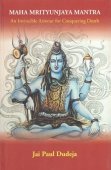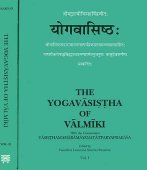Shivapuja, Śivapūjā, Shiva-puja: 6 definitions
Introduction:
Shivapuja means something in Hinduism, Sanskrit. If you want to know the exact meaning, history, etymology or English translation of this term then check out the descriptions on this page. Add your comment or reference to a book if you want to contribute to this summary article.
The Sanskrit term Śivapūjā can be transliterated into English as Sivapuja or Shivapuja, using the IAST transliteration scheme (?).
In Hinduism
Purana and Itihasa (epic history)
Source: archive.org: Puranic EncyclopediaŚivapūjā (शिवपूजा).—(ŚIVA WORSHIP). There are certain injunctions with regard to the worship of Śiva. Nandikeśa and Mahākāla are to be worshipped first. Then should Gaṅgā, Yamunā, the gaṇas, Vāstupuruṣa, Śakti, and Dharma be worshipped. Next, the navaśaktis (nine powers) i.e. Vāmā, Jyeṣṭhā, Raudrī, Kālī, Kalavikariṇī (Kalavikalinī) Balavikariṇī (Balavikalinī) Balapramathinī, Sarvabhūtadamanī and Manonmanī should be worshipped. Then chanting the mantra 'Hām, hūm, hām Śivamūrtaye' Śiva is to be worshipped. Śiva is to be worshipped with aṅgas (with limbs, touching certain portions of the body) and with Vaktra (mouth, chanting). Aṅgas are to be worshipped with the chanting, Haum Śivāya haum' Vaktra with the chanting 'Hām Īśānāya'. Gaurī should be worshipped with the bīja 'Hrīm', Gaṇapati with 'Gam' and Dikpālas like Indra, his arrows and Caṇḍeśvara should be worshipped by touching the heart etc. of the worshipper. (Agni Purāna, Chapter 21).
Source: archive.org: Shiva Purana - English TranslationŚivapūjā (शिवपूजा) refers to the “worship of Śiva”, according to the Śivapurāṇa 2.3.18 (“Description of the perturbation caused by Kāma”).—Accordingly, as Brahmā narrated: “When Kāma did not secure any entry within the great Yogin, he became deluded and frightened much through the magical power of Śiva. Who could gain access to Śiva in meditation, who could fix an eye in his forehead that resembled fire with shooting blazing flames? In the mean time Pārvatī came there along with her two maids and brought various kinds of flowers for Śiva’s worship [i.e., śivapūjā]. [...]

The Purana (पुराण, purāṇas) refers to Sanskrit literature preserving ancient India’s vast cultural history, including historical legends, religious ceremonies, various arts and sciences. The eighteen mahapuranas total over 400,000 shlokas (metrical couplets) and date to at least several centuries BCE.
Shaivism (Shaiva philosophy)
Source: academia.edu: Religious Inclusivism in the Writings of an Early Modern Sanskrit Intellectual (Shaivism)Śivapūja (शिवपूज) [=Śivapūjana?] refers to “Śiva’s worship”, according to Appaya’s Śivārkamaṇidīpikā on the Brahmasūtra 2.2.38.—Appaya does not seem willing to ascribe full ‘vedicness’ to Śaivāgamas, as is clear from the following passage in his subcommentary on the same sūtra: “So it is concluded that the Śaivāgamas follow śruti with regard to the various ways of performing [Śiva’s] worship [i.e., śivapūjana] and Śiva’s greatness—both [features] not being taught in directly perceivable śruti [i.e. the Vedic saṃhitās]—just like Kalpasūtras (whose purpose is to expand upon different parts required by the performance of rituals, of which just a few procedures are taught in directly perceivable śruti) follow śruti with regard to various parts not taught in directly perceivable śruti. Therefore, all things taught in the Veda and Śaivāgamas are exactly the same. But the following is the difference: while in [the case of] Kalpasūtras, it is possible to doubt, with regard to those parts that are contradicted by directly perceivable śruti, that the [human] author may have committed an error, such doubt is not possible in the case of āgamas insofar as they have Śiva as their author”.
Source: Brill: Śaivism and the Tantric TraditionsŚivapūjā (शिवपूजा) [=Śivapūjaka?] refers to the “veneration of Śiva”, according to the 9th-century Sarvajñānottaratantra chapter 18.—Accordingly, “Next, I shall teach the best observance among observances, which is known as the Śiva-vrata and which is revered by Asuras and Gods alike. Pure pale ash [should be used, and] white dress and unguents; he should wear a white sacred thread and be adorned by a chignon of matted locks. He should be equipped with all [suitable] ornaments, [and] adorned with white garlands; he should consume [only the pure ritual gruel-offering known as] caru; he should observe the chaste conduct of a student; he should venerate Śiva (śivapūjaka), the fire and his Guru (śivāgnigurupūjakaḥ). [...]”.

Shaiva (शैव, śaiva) or Shaivism (śaivism) represents a tradition of Hinduism worshiping Shiva as the supreme being. Closely related to Shaktism, Shaiva literature includes a range of scriptures, including Tantras, while the root of this tradition may be traced back to the ancient Vedas.
Languages of India and abroad
Sanskrit dictionary
Source: Cologne Digital Sanskrit Dictionaries: Aufrecht Catalogus CatalogorumŚivapūjā (शिवपूजा) as mentioned in Aufrecht’s Catalogus Catalogorum:—Haug. 51. Burnell. 144^a. 151^b. Oppert. 2075.
—by Mukunda. NW. 218.
Śivapūjā (शिवपूजा):—[=śiva-pūjā] [from śiva] f. idem
Sanskrit, also spelled संस्कृतम् (saṃskṛtam), is an ancient language of India commonly seen as the grandmother of the Indo-European language family (even English!). Closely allied with Prakrit and Pali, Sanskrit is more exhaustive in both grammar and terms and has the most extensive collection of literature in the world, greatly surpassing its sister-languages Greek and Latin.
See also (Relevant definitions)
Partial matches: Shiva, Puja, Civa.
Starts with: Shivapujaka, Shivapujamahiman, Shivapujana, Shivapujanapaddhati, Shivapujanga, Shivapujapaddhati, Shivapujaprakara, Shivapujaprakasha, Shivapujasamgraha, Shivapujasutravyakhyana, Shivapujatarangini, Shivapujavidhana, Shivapujavidhi.
Query error!
Full-text (+2): Shivapujaprakasha, Shivapujavidhana, Shivapujamahiman, Shivapujavidhi, Shivapujapaddhati, Shivapujasamgraha, Shivapujatarangini, Vrihat shivapujaprayoga, Shiva Puja, Pradoshashivapuja, Dvaitanirnayashivapujasamgraha, Atmarthapujapaddhati, Dvaitanirnaya, Puppillai, Nitya, Mukunda, Acarya, Vighna, Shivapujaka, Adishaiva.
Relevant text
Search found 16 books and stories containing Shivapuja, Shiva-puja, Śiva-pūjā, Siva-puja, Śivapūjā, Sivapuja; (plurals include: Shivapujas, pujas, pūjās, Śivapūjās, Sivapujas). You can also click to the full overview containing English textual excerpts. Below are direct links for the most relevant articles:
Isanasivagurudeva Paddhati (study) (by J. P. Prajith)
8. Initial ceremonial steps for Shiva Puja (worship) < [Chapter 4 - Worship of Gods and Goddesses]
2. Worship of Shiva in Isanasivagurudeva-paddhati (Introduction) < [Chapter 4 - Worship of Gods and Goddesses]
Shaivacintamani (analytical study) (by Swati Sucharita Pattanaik)
Part 14 - Pūjā (worshipping gods) < [Chapter 3: Śaiva tradition and Śaivacintāmaṇi]
Part 2.1 - Śaivism in Liṅga-Purāṇa < [Chapter 2: Śaivism in Śaiva Purāṇas of Odisha]
Part 18 - A Note on the Important Śaiva Vratas < [Chapter 3: Śaiva tradition and Śaivacintāmaṇi]
Notices of Sanskrit Manuscripts (by Rajendralala Mitra)
Temples of Munnur (Historical Study) (by R. Muthuraman)
Introduction: Pujas and Festivals < [Chapter 6]
Chaitanya Bhagavata (by Bhumipati Dāsa)
Verse 2.19.193 < [Chapter 19 - The Lord’s Pastimes in Advaita’s House]
Verse 3.2.318 < [Chapter 2 - Description of the Lord’s Travel Through Bhuvaneśvara and Other Placesto Jagannātha Purī]
Verse 3.2.399 < [Chapter 2 - Description of the Lord’s Travel Through Bhuvaneśvara and Other Placesto Jagannātha Purī]
Saivism in the Patala-Khanda of the Padma-Purana < [Purana, Volume 9, Part 1 (1967)]
Linga-purana and the Tantra Sastra < [Purana, Volume 6, Part 2 (1964)]
Yaksha Worship in Matsya Purana < [Purana, Volume 1, Part 2 (1960)]
Related products

